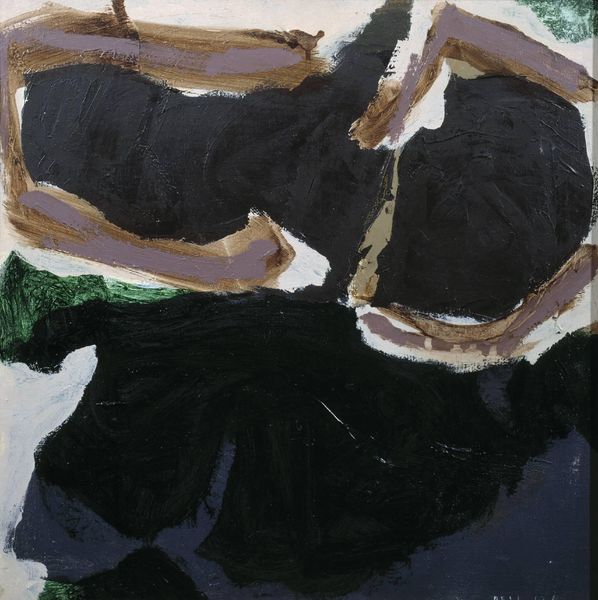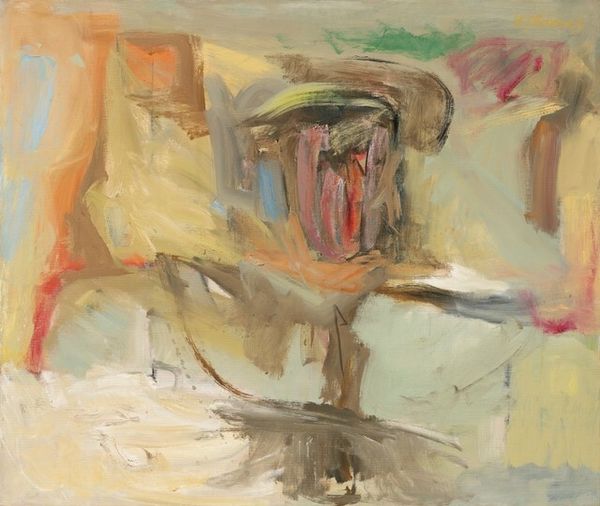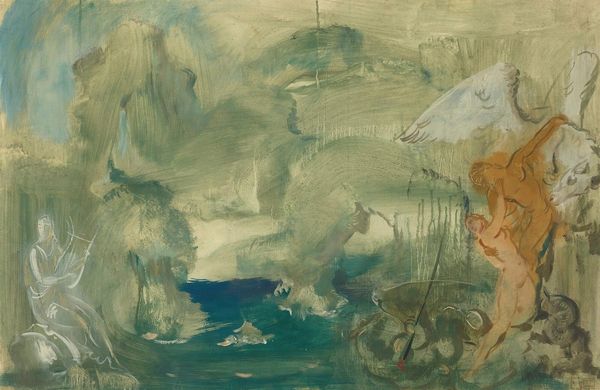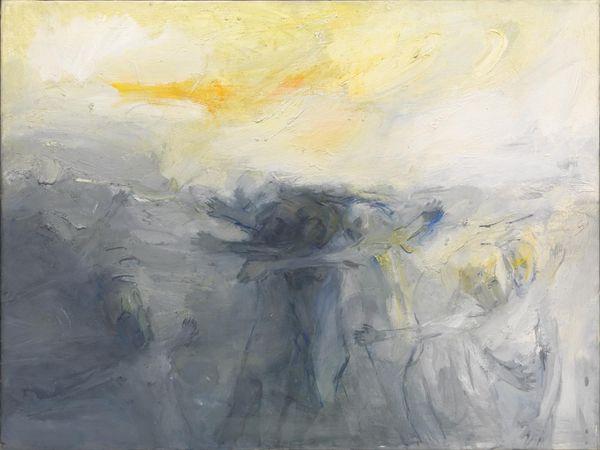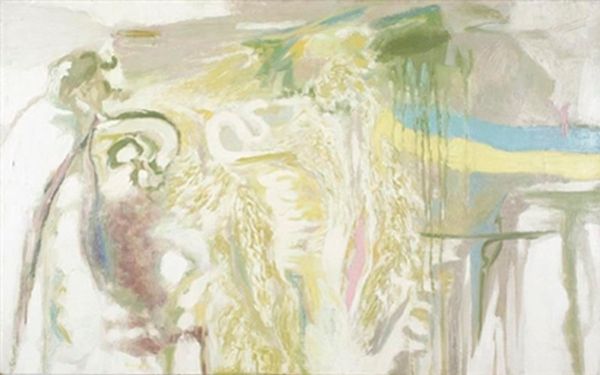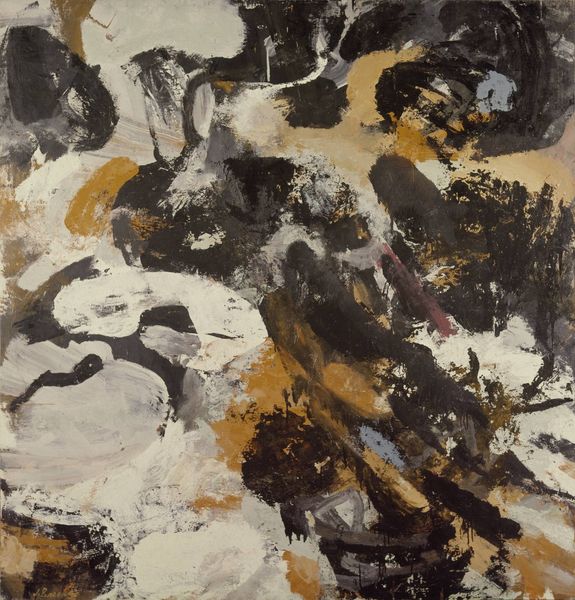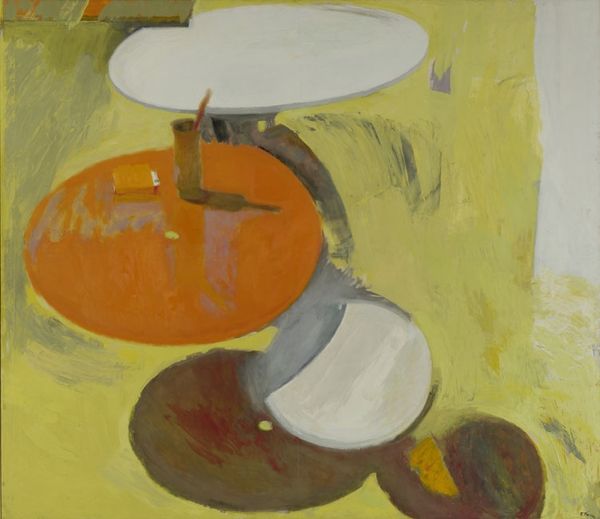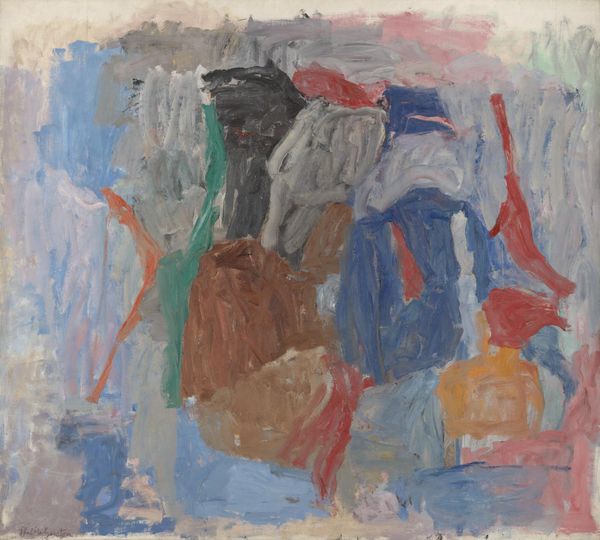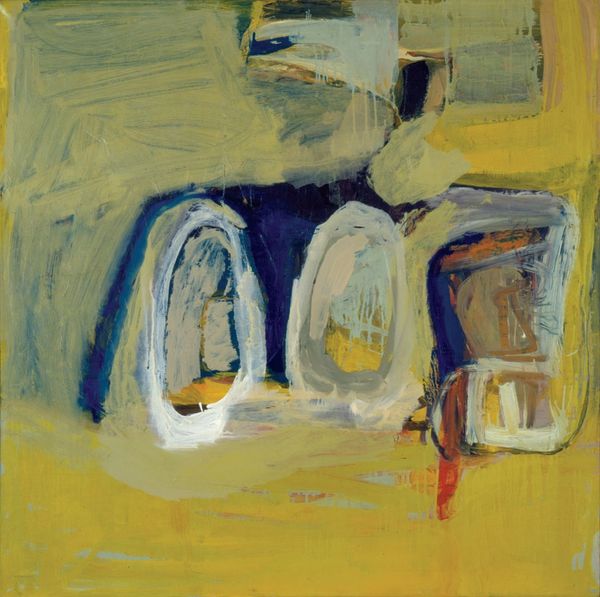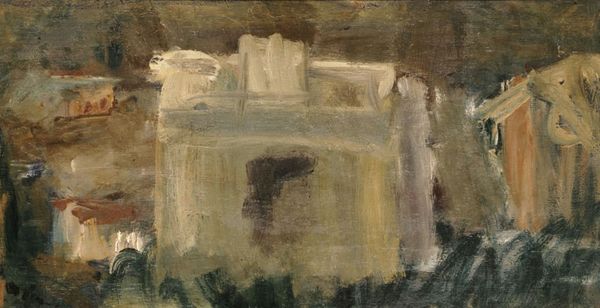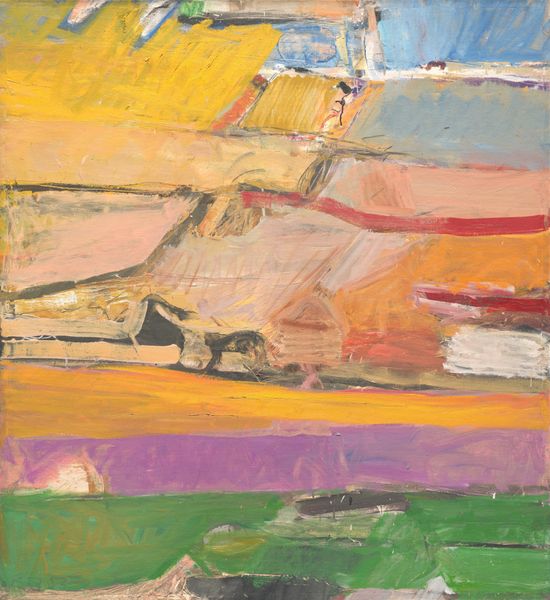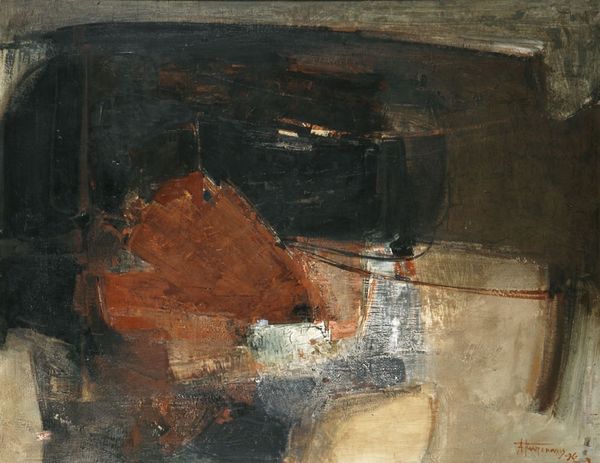
oil-paint, canvas
#
oil-paint
#
form
#
oil painting
#
canvas
#
modernism
#
realism
Dimensions: 50 cm (height) x 67 cm (width) (Netto)
Editor: Here we have Vilhelm Lundstrom's "Still Life with Cloth and Bowl," painted around 1920. It's an oil on canvas and, well, the texture is really striking. The brushstrokes are so visible. What do you see in this piece, looking beyond the obvious subject matter? Curator: Indeed. Focusing purely on form, notice how Lundstrom manipulates light to sculpt the objects. The bowl and the cloth aren't just depicted; they're built with light and shadow. Consider how the light doesn't merely illuminate, but defines volume and texture. Editor: So you're saying the shapes themselves are less important than how he uses light to describe them? Curator: Precisely. Observe the muted palette – predominantly greys and creams. It almost flattens the image, pushing it towards abstraction, yet the modulation of tone gives spatial presence. Also note the artist's method to let surface remain exposed at the corners of the composition. What is the effect? Editor: That's interesting, so even without a wild color palette, the tonal range creates depth. Exposing surface seems to deconstruct any idea of perfect imitation, breaking any potential for visual realism. Curator: Absolutely. The overt brushwork and visible construction contribute to the artwork’s essence. There is more focus on visual sensations, rather than exactitude of representation. Editor: This focus on light, shadow, and the brushstrokes themselves…it makes me appreciate the painting on a whole new level. I was so focused on subject and object. Curator: It is vital to consider not merely WHAT we see, but HOW the artwork generates meaning. Focus, reflect and you will begin to recognize visual sensations that may allow for deeper personal connections to any object.
Comments
No comments
Be the first to comment and join the conversation on the ultimate creative platform.
